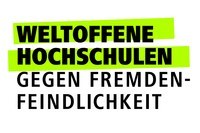| Phone: | +49 261 287 2233 |
| E-Mail: | cawinkelmann(at)uni-koblenz.de |

PD Dr. Carola Winkelmann
Curriculum vitae
Head of the stream ecology lab of the University of Koblenz since 2017
2017 Venia Legendi Hydrobiology / Zoology, Department of Mathematics and Natural Sciences of the University Koblenz-Landau
2011-2016 Head of an Emmy Noether junior research group of the University Koblenz-Landau
2009-2011 Guest researcher at the Federal Institute of Hydrology in Koblenz, Departmen of Animal Ecology
2008 PhD at the Institute of Hydrobiology at the TU Dresden
2006 Research stay at the University of Otago in Dunedin (New Zealand)
2003-2011 Researcher at the TU Dresden, Institute of Hydrobiology
2001- 2002 PhD student at the TU Dresden, Institute of Hydrobiology
2000 Biology Diploma at the TU Dresden, Institute of Hydrobiology
1994-1999 Study of Biology at the Friedrich Schiller University Jena and at the TU Dresden, main subject Hydrobiology
Research
Conservation of aquatic biodiversity
Freshwater ecosystems are biodiversity hotspots, harbouring 10% of all species in only 1% of the total earth surface. At the same time, freshwater ecosystems are heavily impacted by climate change, over-exploitation and pollution, threatening this biodiversity. In Germany, more than 50% of the fish species are now on the IUCN red list. Molluscs and fish have the highest proportion of species in a bad conservational status following the European FFH directive. Consequently, the protection of aquatic species is of the highest importance. I therefore aim to identify key factors for a positive population development of threatened species (Thick shelled river mussel, Grayling, European nase).
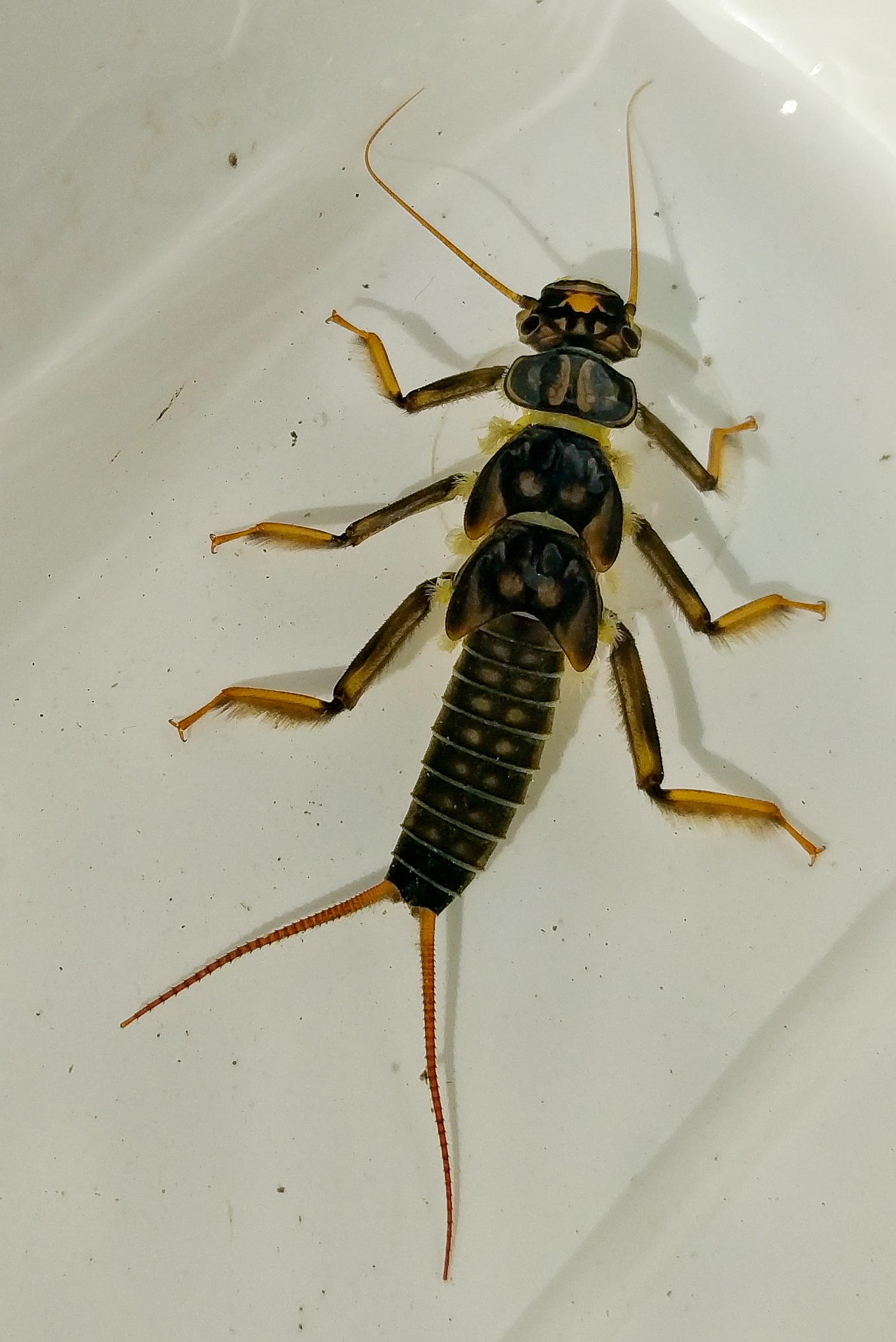
Food web interactions in streams
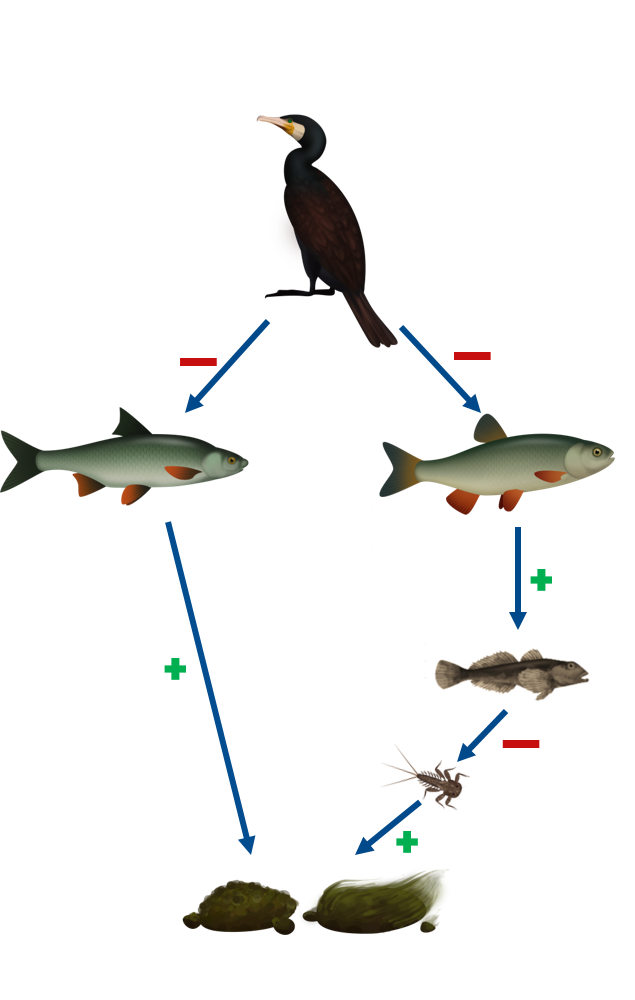
Predator-prey interactions or predator effects on benthic community composition and ecosystem functions are not often studied in streams. Nevertheless, predators can have strong direct and indirect effects in stream ecosystems. A high predation pressure of piscivore birds (e.g. cormorants) can indirectly increase eutrophication effects by causing algae blooms and clogging of the hyporheic zone and thereby reducing the quality of the stream habitats for benthic invertebrates. In field surveys and experiments I therefore study predation effects with the aim to integrate species interactions into assessment and conservation of streams communities.
Anthropogenic effects on benthic invertebrates
Streams are heavily impacted by anthropogenic stressors due to exploitation pressure and because catchments spatially integrate land use effects. Besides hydro-morphological degradation and increased nutrient inputs, micro-pollutants can impact ecological stream quality. I aim to develop biological indicators for such stressors and to analyse ecosystem scale effects.
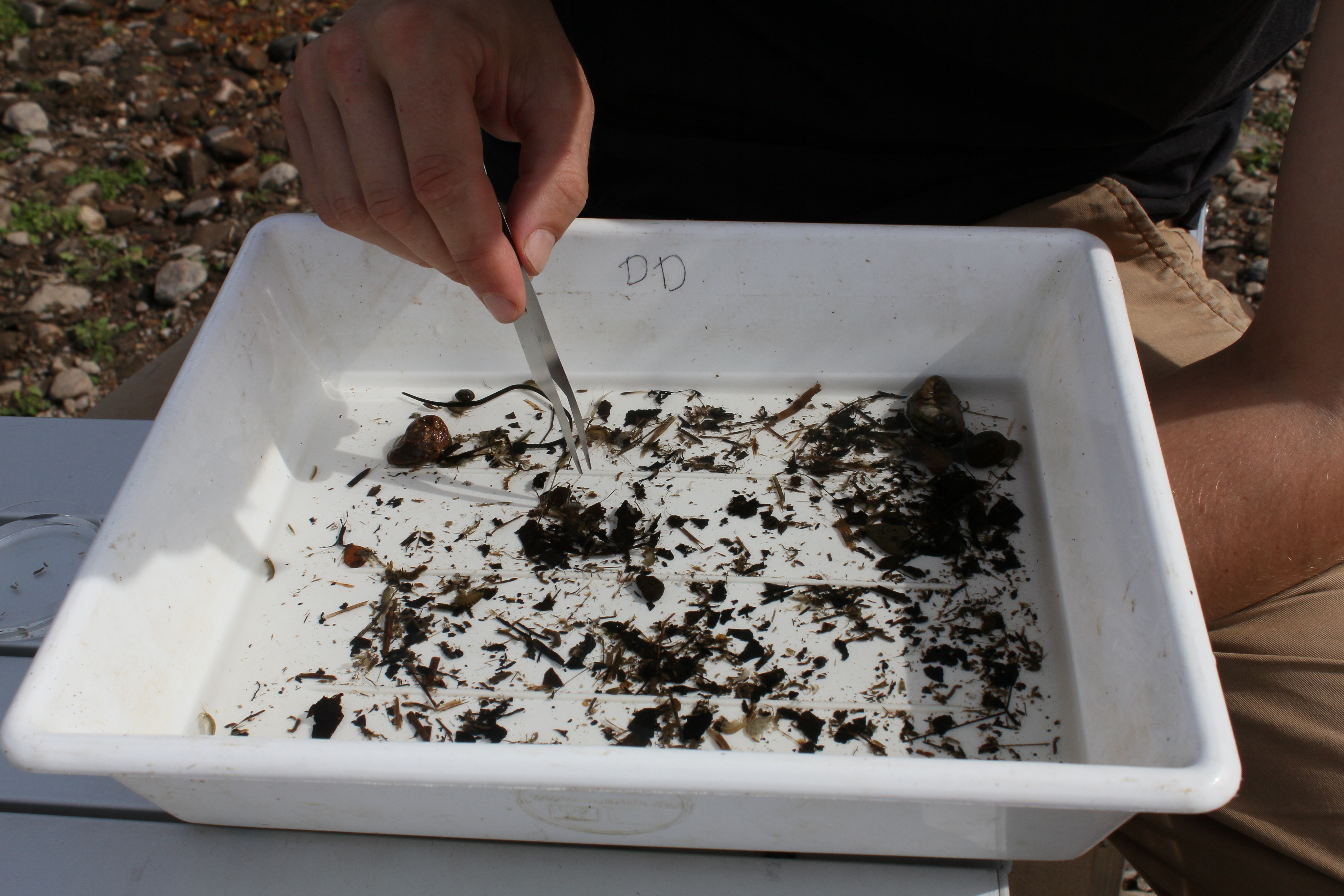
Ecological stream restoration
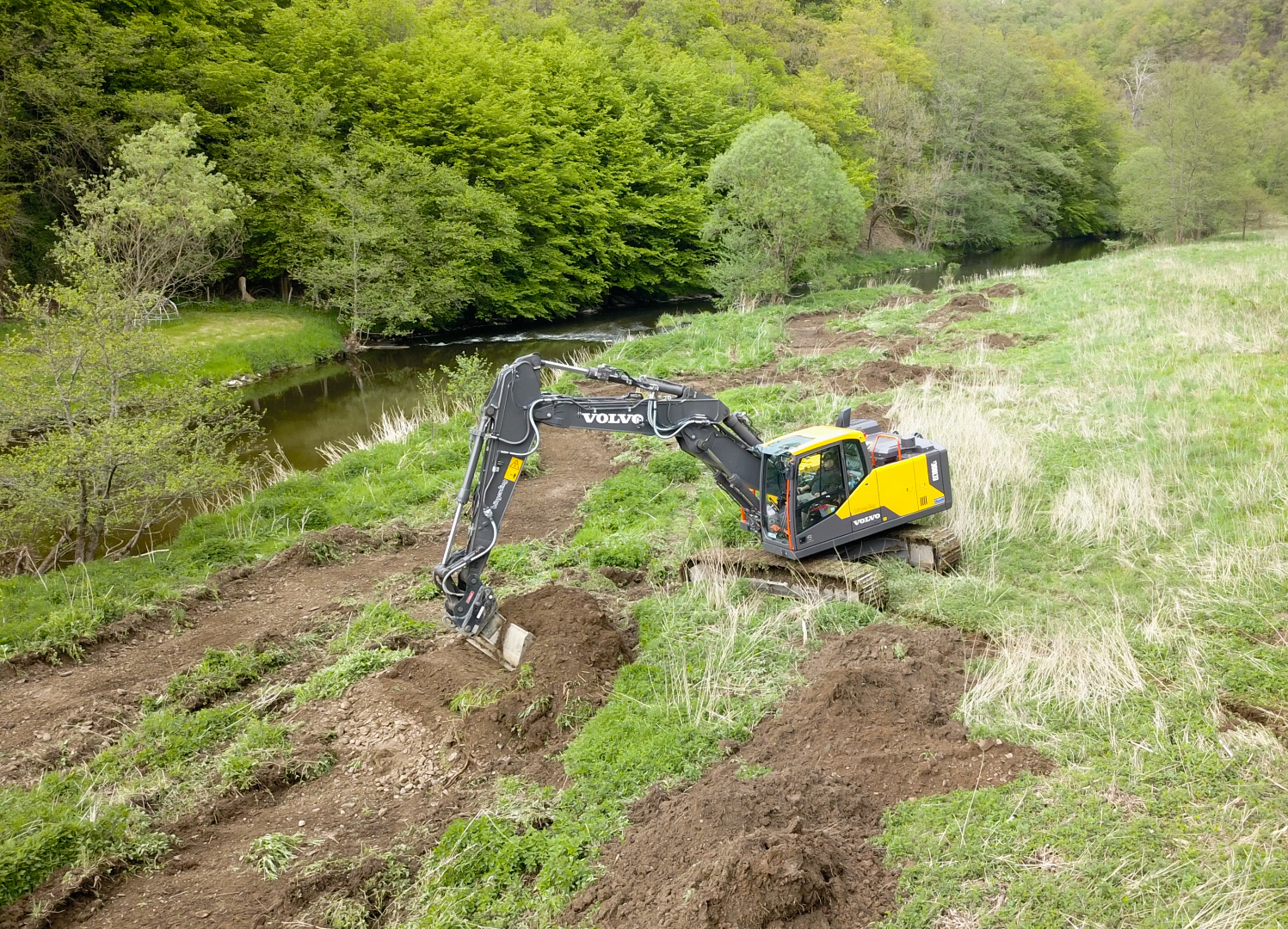
In the last years a rising number of restoration projects is implemented to increase ecological quality of streams and conserve aquatic biodiversity. Successive measures need a deep understanding of aquatic ecosystems and can usually not planned by local managers alone. Instead an intensive cooperation between praxis partners and scientists is needed for successful restoration measures and to efficiently use the available financial means. Within this frame, we support different stream restoration projects and monitor their ecological success.
Publications
Worischka S, Schöll F, Winkelmann C, Petzoldt T (2023) Twenty-eight years of ecosystem recovery and destabilisation: Impacts of biological invasions and climate change on a temperate river, Science of The Total Environment 875: 162678, Download
Backström T, Winkelmann C (2022) Invasive round goby shows higher sensitivity to salinization than native European perch, NeoBiota 75:23-38
Weise K, Kurth T, Politowski I, Winkelmann C, Schäffer A, Kretschmar S, Berendonk T U and Jungmann D (2022) A workflow to investigate the impacts of weathered multi-walled carbon nanotubes to the mudsnail Lymnaea stagnalis. Environmental Science and Pollution Research 10.1007/s11356-021-17691-0, Download
Gerke M, Hübner D, Schneider J, Winkelmann C (2021) Can top-down effects of cypriniform fish be used to mitigate eutrophication effects in medium-sized European rivers? Science of the total Environment 755: 142547, Download
Hübner D, Gerke M, Fricke R, Schneider J, Winkelmann C (2020) Cypriniform fish in running waters reduce hyporheic oxygen depletion in a eutrophic river, Freshwater Biology, DOI: 10.1111/fwb.13517, Download
Gültekin Z, Hellmann C, Aydin R, Winkelmann C (2019) Possible indices for the assessment of ecological stream quality based on macroinvertebrates in Euphrates tributaries (Turkey), Journal of Freshwater Ecology, 34: 783-806, Download
Peez N, Becker J, Ehlers S, Fritz1 M, Fischer CM, Koop JHE, Winkelmann C, Imhof W (2019) Quantitative analysis of PET microplastics in environmental model samples using quantitative H-1-NMR spectroscopy: validation of an optimized and consistent sample clean-up method, Analytical and Bioanalytical Chemistry 411. 7409-7418
Koester M, Schneider M, Hellmann C, Becker J, Winkelmann C, Gergs R (2018) Is the invasive amphipod Dikerogammarus villosus the main factor structuring the benthic community across different types of water bodies in the River Rhine system? Limnologica 71: 44-50
Chemnitz J, Fujan I S, Winkelmann C, Steiger S (2018) Why are males more attractive after brood care? Proximate causes of enhanced sex pheromone emission in a burying beetle. Physiological Entomology, 43: 128-128
Worischka S, Richter L, Hänig A, Hellmann C, Becker J, Kratina P, Winkelmann C (2018) Food consumption of the invasive amphipod Dikerogammarus villosus in field mesocosms and its effects on leaf decomposition and periphyton. Aquatic Invasions, 13: 261-275
Richter L, Schwenkmezger L, Becker J, Winkelmann C, Hellmann C, Worischka S (2018) The very hungry amphipod: the invasive Dikerogammarus villosus shows high consumption rates for two food sources and independent of predator cues. Biological Invasions, 20: 1321-1335, DOI: 10.1007/s10530-017-1629-4
Gerke M, Cob Chaves D, Richter M, Mewes D, Schneider J, Hübner D, Winkelmann C (2018) Benthic grazing in a eutrophic river: cascading effects of zoobenthivorous fish mask direct effects of herbivorous fish. PeerJ PeerJ 6:e4381; DOI 10.7717/peerj.438
Hoppeler F, Winkelmann C, Becker J, Pauls SU (2018) Larval growth and metabolic energy storage of Micropterna lateralis (Trichoptera: Limnephilidae) in an intermittent stream: glycogen dominates in final instars. Hydrobiologia 806: 175-185.
Gültekin Z, Aydin R, Winkelmann C (2017) Macroinvertebrate composition in the metarhitral zones of the Munzur and Pülümür Rivers: A preliminary study. Turkish Journalof Zoology 41: 1100-1104.
Gültekin Z, Remmers W, Aydin R, Winkelmann C, Hellmann C (2017) Characterization of natural streams using community indices and basal resources of macroinvertebrates in the upper Euphrates Basin. Limnologica 65: 34–37
Mewes D, Spielvogel S, Winkelmann C (2017) RNA/DNA ratio as a growth indicator of stream periphyton. Freshwater Biology. 62: 807-818
Hellmann C., Schöll F., Worischka S., Becker J., Winkelmann C. (2017) River-specific effects of the invasive amphipod Dikerogammarus villosus (Crustacea: Amphipoda) on benthic communities. Biological Invasions. 19: 381–398; 10.1007/s10530-016-1286-z
Taupp, T., Hellmann, C., Gergs, R., Winkelmann, C., Wetzel, M.A. (2017): Life under exceptional conditions - isotopic niches of benthic invertebrates in the estuarine maximum turbidity zone.
Estuaries and Coasts; DOI 10.1007/s12237-016-0163-4
Bol R, Julich D, Brödlin D, Siemens J, Kaiser K, Dippold M, Spielvogel S, Zilla T, Mewes D, von Blanckenburg F, Puhlmann H, Holzmann S, Weiler M, Amelung W, Lang F, Kuzyakov Y, Feger K-H, Gottselig N, Klumpp E, Missong A, Winkelmann C, Uhlig D, Sohrt J, von Wilpert K, Wu B, Hagedorn F (2016) Dissolved and colloidal phosphorus fluxes in forest ecosystems – an almost blind spot in ecosystem research. Journal of Plant Nutrition and Soil Science 179: 425–438. Download
Fernández D, Tummala M, Schreiner V, Duarte S, Pascoal C, Winkelmann C, Mewes D, Muñoz K, Schäfer R (2016) Does nutrient enrichment compensate fungicide effects on litter decomposition and decomposer communities in streams? Aquatic Toxicology 174: 169–178
Hellmann C, Worischka S, Mehler E, Becker J, Gergs R, Winkelmann C (2015) The trophic function of Dikerogammarus villosus (Sowinsky, 1894) in invaded rivers: a case study in the Elbe and Rhine. Aquatic Invasions, 10: 385-397. Download
Normant-Saremba M, Becker J, Winkelmann C (2015) Physiological and behavioral responses of the invasive amphipod, Dikerogammarus villosus to ammonia. Comparative Biochemistry and Physiology, Part A 189: 107-114
Worischka S, Schmidt SI, Hellmann C, Winkelmann C (2015) Selective predation by benthivorous fish on stream macroinvertebrates – the role of prey traits and prey abundance. Limnologica 52: 41-50
Szokoli F, Winkelmann C, Berendonk T U, Worischka, S (2015) The role of fish kairomones and food availability for the predator avoidance behaviour of Gammarus pulex. Fundamental and Applied Limnology 186: 249-258
Worischka S, Hellmann C, Berendonk T U, and Winkelmann C (2014) Fish predation can induce mesohabitat-specific differences in food web structures in small stream ecosystems. Aquatic Ecology 48: 367-378
Winkelmann C, Schneider J, Mewes D, Schmidt SI, Worischka S, Hellmann C, Benndorf, J (2014) Top-down and Bottom-up Control of Periphyton in a Natural Stream Ecosystem. Freshwater Biology 59: 803–818
Schneider J, Worischka S, Hellmann C, Benndorf J, Winkelmann C (2014) Flexibility in feeding periodicity of mayflies in response to different concentrations of benthivorous fish cues. Limnologica 45: 24–32
Hellmann C, Wissel B, Winkelmann C (2013) Omnivores as seasonally important predators in a stream food web. Freshwater Science 32:548–562
Schäffer M, Winkelmann C, Hellmann C, Benndorf J (2013) Reduced drift activity of two benthic invertebrate species is mediated by infochemicals of benthic fish. Aquatic Ecology 47: 99-107
Becker J, Ortmann C, Wetzel M, Winkelmann C, Koop JHE (2013) Mate guarding in relation to seasonal changes in the energy reserves of two freshwater amphipods (Gammarus fossarum, G. pulex). Freshwater Biology 58: 372-381
Rybicki M, Winkelmann C, Hellmann C, Bartels P, Jungmann D (2012) Herbicide indirectly reduces physiological condition of a benthic grazer. Aquatic Ecology 17: 153–166
Worischka S, Koebsch C, Hellmann C, Winkelmann C (2012) Habitat overlap between benthic fish predators and their invertebrate prey in streams: The influence of spatial versus temporal patterns on predation risk. Freshwater Biology 57:2247-2261
Koop JHE, Winkelmann C, Becker J, Hellmann C, Ortmann C (2011) Physiological indicators of fitness in benthic invertebrates: a useful measure for ecological health assessment and experimental ecology. Aquatic Ecology 45, 547-559.
Hellmann, C.; Winkelmann, C.; Worischka, S.; Benndorf, J. (2011) Extended larval development compensates for subletha leffects of fish predation in a mayfly population (Rhithrogena semicolorata, Ephemeroptera). Limnologica 41: 256-265.
Winkelmann, C.; Hellmann, C.; Worischka, S.; Petzoldt, T.; Benndorf, J. (2011) Fish predation affects the structure of a benthic community. Freshwater Biology 56: 1030–1046.
Schmidt, S.I., König-Rinke, M., Kornek, K., Winkelmann, C., Wetzel, M.A., Koop, J.H.E., Benndorf, J. (2009) Finding appropriate reference sites in large-scale aquatic field experiments. Aquatic Ecology 43: 169-179.
Koop, J.H.E., Schäffer, M., Ortmann, C., Winkelmann, C. (2008) Towards environmental assessment of river ecosystems by analyzing energy reserves of aquatic invertebrates. Limnologica 38: 378–387.
Winkelmann, C., Koop, J.H.E., Matthaei, C, Petzoldt, T. & Benndorf, J. (2008) Benthivorous fish reduce stream invertebrate drift in a large-scale field experiment. Aquat. Ecol. 42: 483-493.
Winkelmann, C., Worischka, S., Koop, J.H.E. & Benndorf, J. (2007) Predation effects of benthivorous fish on grazing and shredding macroinvertebrates in a detritus-based stream food web – a large scale approach. Limnologica 37: 121–128.
Winkelmann, C. & Koop J.H.E (2007) The management of metabolic energy storage during the life-cycle of mayflies: A comparative field investigation of the collector-gatherer Ephemera danica and the scraper Rhithrogena semicolorata. Journal of Comparative Physiology B 177:119-128.
Winkelmann, C., Koop, J.H.E. & Benndorf, J. (2003): Abiotic features and macroinvertebrate colonization of the hyporheic zones of two tributaries of the river Elbe (Germany). Limnologia 33: 112-121.
Teaching
Module Ecosystems and climat change (Limnology lecture, BSc BioGeoScience)
Modul Freshwater ecology (Literature seminar, Stream ecology lecture, MSc BioGeoScience, MSc Hydrology and Water Managenent)
Module Ecological stream assessment (Field and lab exercise, MSc BioGeoScience, MSc Hydrology and Water Managenent
Module Management of Inland Waters (lectures, MSc BioGeoScience, MSc Hydrology and Water Managenent)
Case study Aquatic ecolgy
Curriculum vitae
Head of the stream ecology lab of the University of Koblenz since 2017
2017 Venia Legendi Hydrobiology / Zoology, Department of Mathematics and Natural Sciences of the University Koblenz-Landau
2011-2016 Head of an Emmy Noether junior research group of the University Koblenz-Landau
2009-2011 Guest researcher at the Federal Institute of Hydrology in Koblenz, Departmen of Animal Ecology
2008 PhD at the Institute of Hydrobiology at the TU Dresden
2006 Research stay at the University of Otago in Dunedin (New Zealand)
2003-2011 Researcher at the TU Dresden, Institute of Hydrobiology
2001- 2002 PhD student at the TU Dresden, Institute of Hydrobiology
2000 Biology Diploma at the TU Dresden, Institute of Hydrobiology
1994-1999 Study of Biology at the Friedrich Schiller University Jena and at the TU Dresden, main subject Hydrobiology
UNIVERSITY OF KOBLENZ
Universitätsstraße 1
56070 Koblenz


